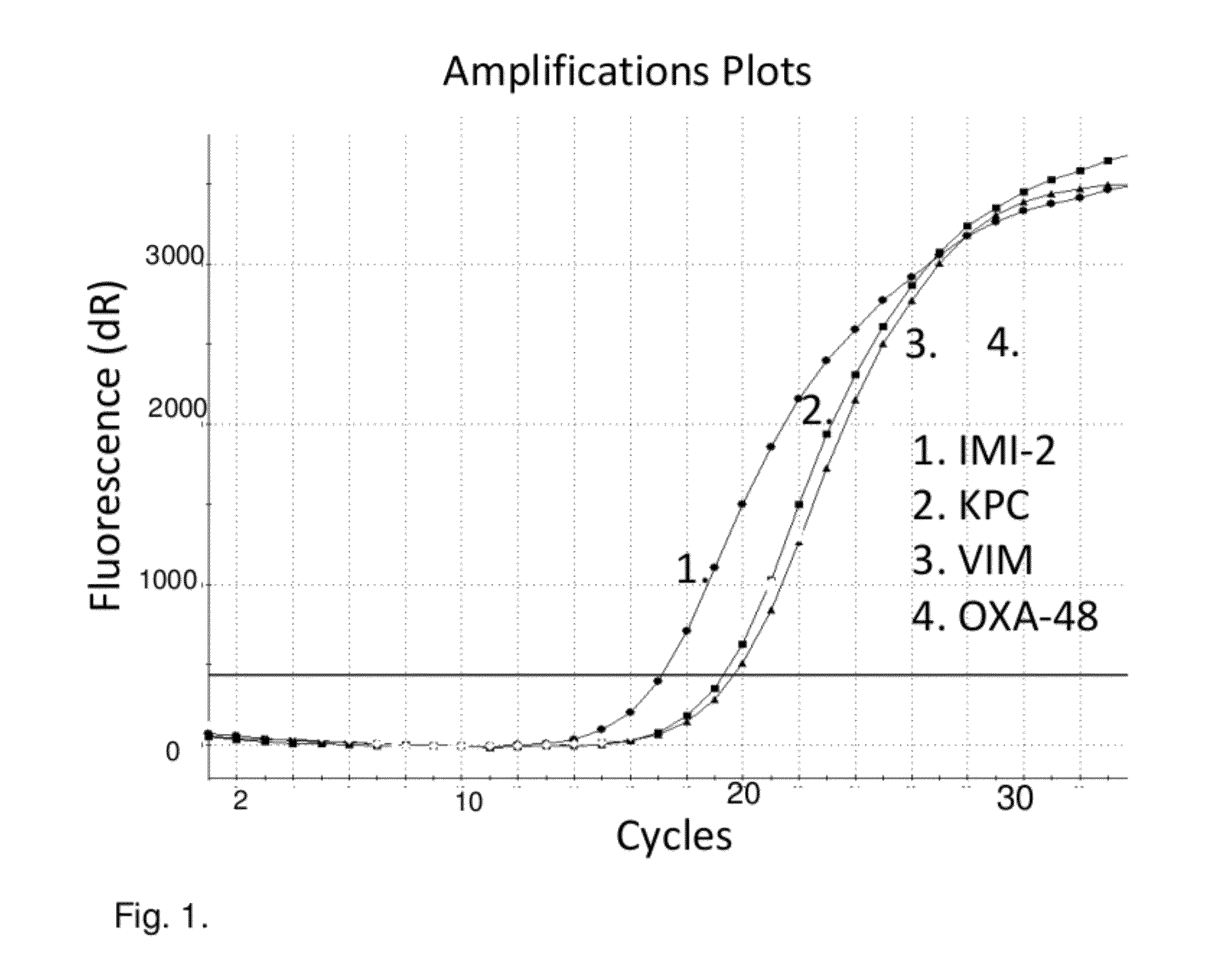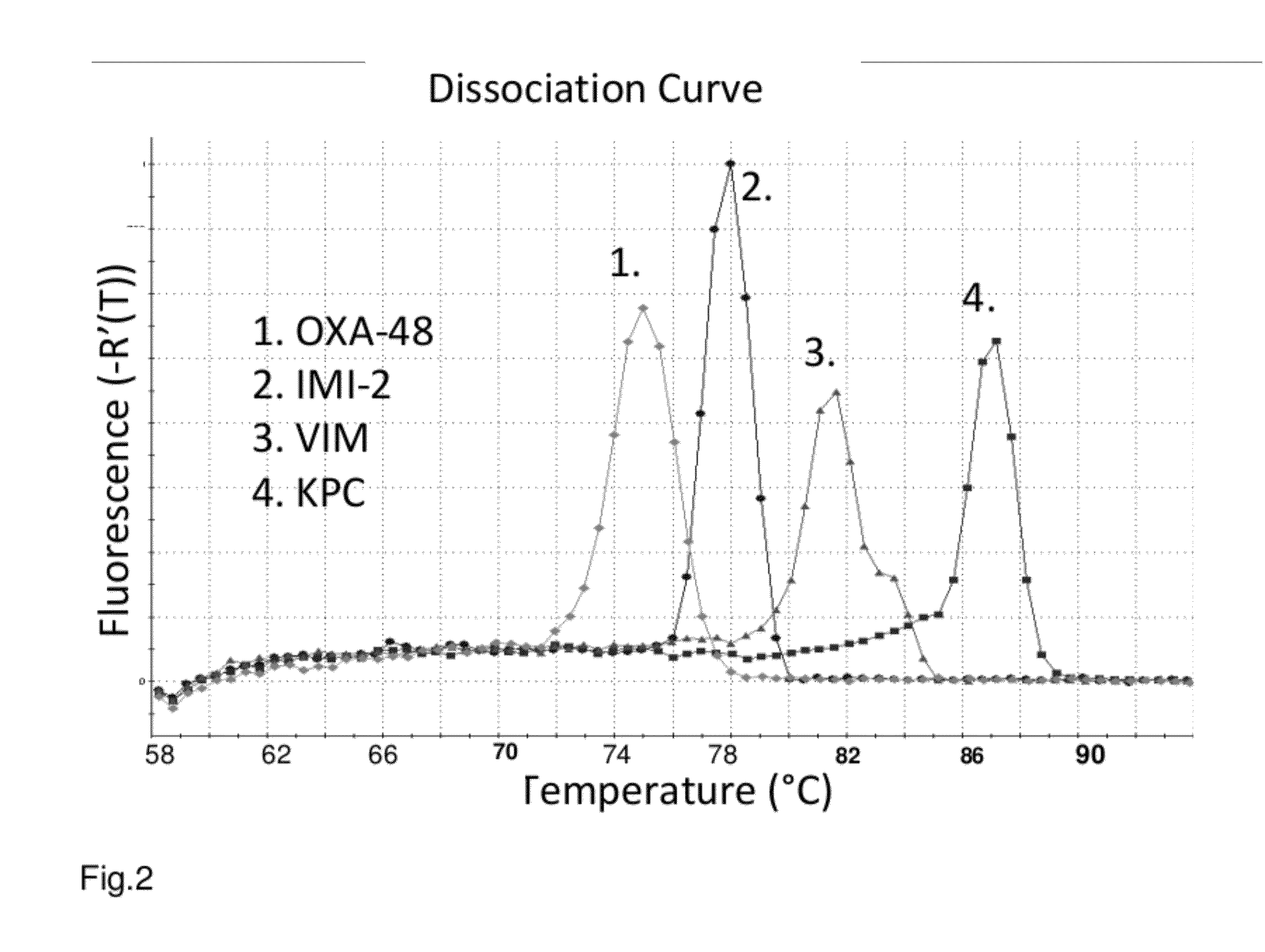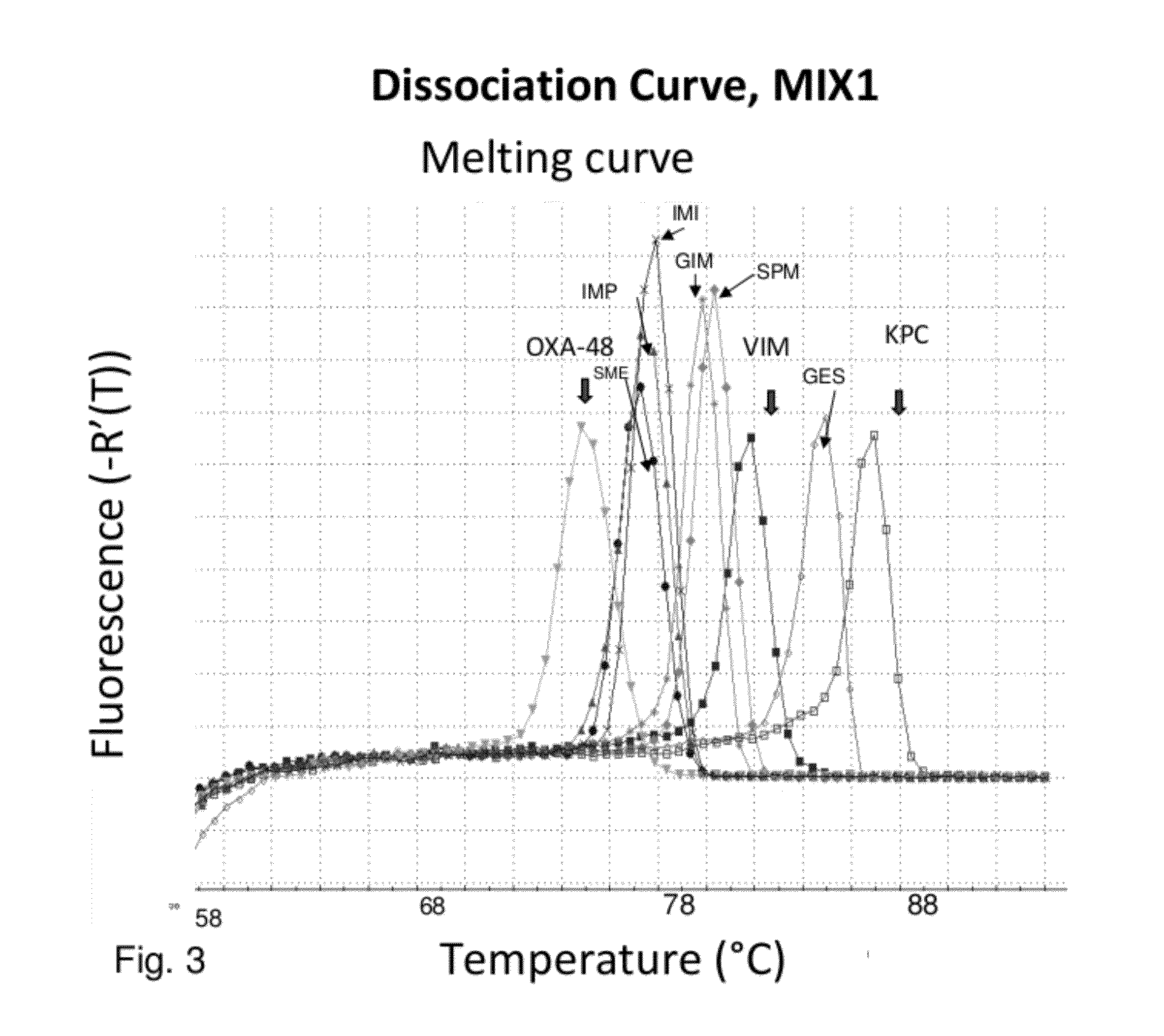Method and A Kit for Detecting Antibiotic Resistant Bacteria
- Summary
- Abstract
- Description
- Claims
- Application Information
AI Technical Summary
Benefits of technology
Problems solved by technology
Method used
Image
Examples
example 1
Methods
[0083]The Real-Time PCR assay design was divided in two multiplex reactions. The first multiplex was designed to detect VIM 1-22, IMP 1-24, OXA-48, KPC 1-7, GES 1-10, SPM, NMC-A, IMI 1-2, SME 1-3, GIM-1, and SIM-1 genes. The other multiplex was designed for OXA genes with carbapenemase properties only, including OXA-24, -25, 26, -40, -72, OXA-23, -27, OXA-50, OXA-51, 64-71, 75-78, 83-89, -92, -94, -95, OXA-55, OXA-58, OXA-60, and OXA-62. SYBR Green chemistry was chosen to allow numerous genes to be detected within single reaction. A melting curve analysis was used to preliminarily identify putative molecular mechanism of positive samples, which were confirmed with sequencing with reference primers. This assay was used to screen putative ESBL strains systematically. Moreover, the screening assay is part of routine diagnostics to screen putative Enterobacteriaceae species with reduced susceptibility (meropenem disk diameter <23 mm), or reduced MIC (I / R) to meropenem, imipenem o...
example 2
[0085]The methods as described in Example 1 were repeated to detect in the first multiplex reaction OXA-48, SME, GIM-1, VIM, SPM, GES, KPC, IMI 1-3 / NMC-A, IMP-10, IMP-11, and in the second multiplex reaction OXA-23 group, OXA-24 group, OXA-51 group with ISabal promoter, OXA-55, OXA-58, OXA-60, OXA-62, CMY-1, -10, SFC-1, NDM-1, and SIM-1.
[0086]In these experiments were found four Klebsiella pneumoniae strains with KPC gene, one E. coli strain with OXA-48, three Pseudomonas aeruginosa strains with GES, and six Pseudomonas aeruginosa / putida strains with IMP gene. Also more than fifty Acinetobacter baumannii complex strains with different combinations of OXA-23, OXA-24, OXA-58 genes were found.
example 3
[0087]To detect carbapenemase genes in Enterobacteriaceae, Pseudomonas sp. and Acinetobacter sp., we developed a simple multiplex Real-Time PCR potentially detecting >100 different carbapenemase genes or their variants from culture isolates. The assay comprise from multiplex PCR divided in two reactions, Multiplex 1 detecting IMP, IMI / NMC-A, KPC, GES, VIM, OXA-48 group (incl. OXA-163, -181), GIM-1, SPM-1, and SME.
TABLE 1illustrates the strains detected with the first multiplex detection.StrainGeneTypical CtSpeciesIDGenegroup(50 ng / μl)T(m)Ps. aeruginosaT-105312IMP-15IMP1577E. cloacaeT-64586IMI-2IMI,1478NMC-AKl. pneumoniaeJK78KPC-2KPC1787Kl. pneumoniaeJK241GES-1GES2384Kl. pneumoniae293VIM-1VIM1781E. coli301OXA-48OXA-157548, -181Ps. aeruginosa1078GIM-1GIM-11680Ps. aeruginosa1081SPM-1SPM-11680E. coli*#925SMESME1177*gene construct plasmid in E. coli
[0088]Multiplex 2 detecting OXA-24 / 40 group, OXA-23 group, ISAba1-OXA51 group, OXA-58, CMY-1, 10, SFC, NDM, and SIM. In addition, a subset of...
PUM
| Property | Measurement | Unit |
|---|---|---|
| Temperature | aaaaa | aaaaa |
| Temperature | aaaaa | aaaaa |
| Temperature | aaaaa | aaaaa |
Abstract
Description
Claims
Application Information
 Login to View More
Login to View More - R&D
- Intellectual Property
- Life Sciences
- Materials
- Tech Scout
- Unparalleled Data Quality
- Higher Quality Content
- 60% Fewer Hallucinations
Browse by: Latest US Patents, China's latest patents, Technical Efficacy Thesaurus, Application Domain, Technology Topic, Popular Technical Reports.
© 2025 PatSnap. All rights reserved.Legal|Privacy policy|Modern Slavery Act Transparency Statement|Sitemap|About US| Contact US: help@patsnap.com



